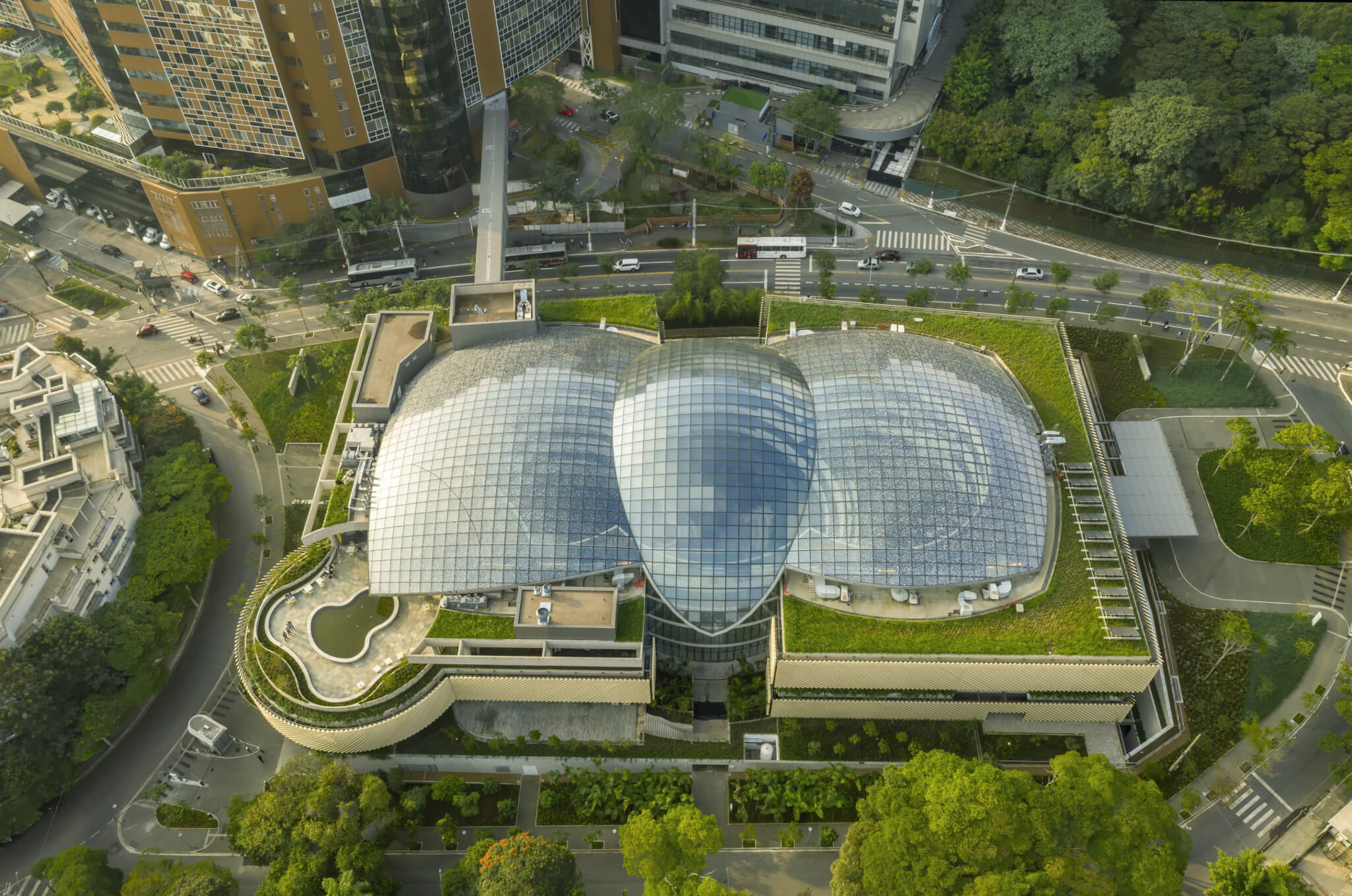- Architect
Safdie Architects - Location
São Paulo, Brazil - Opening
August, 2022 - Programmer, Interior Planner, and Executive Architect
Perkins&Will
- Landscape Architect
Isabel Duprat - Skylight Sub-Contractor
Seele - Structural Engineer
Thornton Tomasetti, Avila Engenharia, BRZ Experts - Facade
Thornton Tomasetti, Crescencio - Environmental
Atelier Ten, Ca2 - Horticulture
Sue Minter - General Contractor
Racional Engenharia - Exposed Concrete Beams
Peri - Glazing
Schüco - Glazing Installation
Luxalum - Polymer Resin Brise-Soleil
Lure
Continuing their work on curved-roof atriums, exemplified by the Jewel at Singapore’s Changi Airport, Safdie Architects has emulated the feeling of a tree canopy in São Paulo’s Albert Einstein Education and Research Center (AEERC). With state-of-the-art medical research facilities, the project connects to an existing hospital in the city’s Morumbi district.
The building will serve the needs of over 2,000 medical and nursing students, containing 40 classrooms—with programmatic flexibility—an auditorium, laboratories, and facilities to simulate examination and operating rooms. The building is organized around a tiered central atrium that houses a garden-like space, while also connecting the four primary floors of the building. The central court is shaded by a vaulted glass ceiling, with three structural domes spanning its length. Around the atrium, facilities are grouped in two wings, with the building’s structure embracing the sloping landscape of the 12,000-square-meter (129,167-square-foot) site.

The 3,800-square-meter (40,900-square-foot) ceiling was constructed from 1,854 glass panels, with minimal structural steel in order to reduce weight. The glass is barely reflective, as the architects did not want strong reflections to impact the surrounding environment. It was designed with extensive digital modeling. As Safdie Architects partner Sean Scensor and senior associate Isaac Safdie explained, the “aim was to simulate the effect of being outdoors, under the canopy of trees, on a beautiful day with a clear view of the sky above.”





